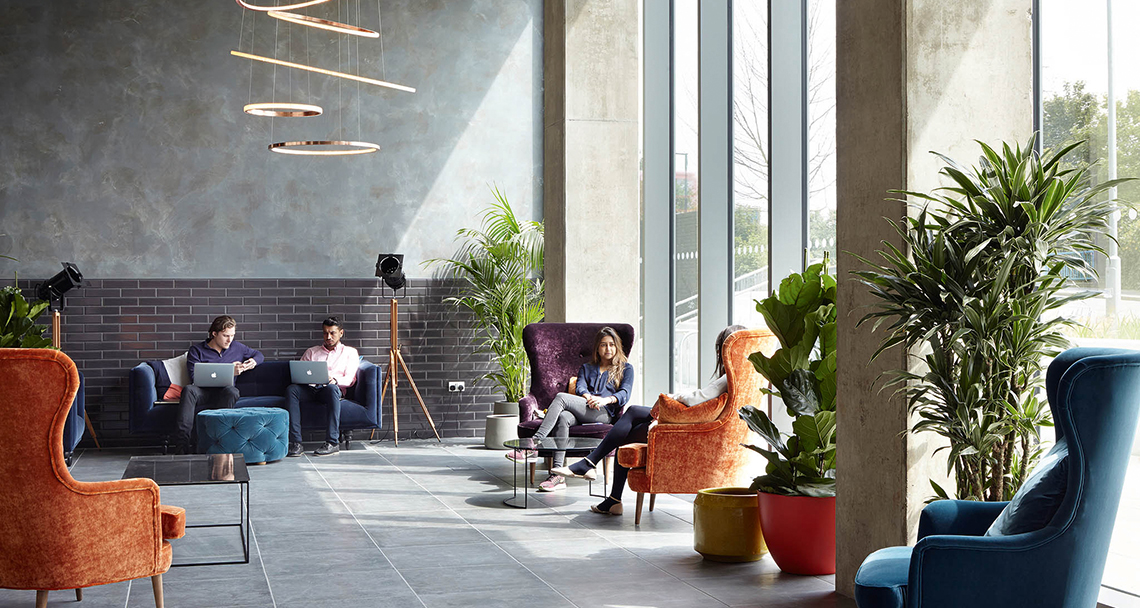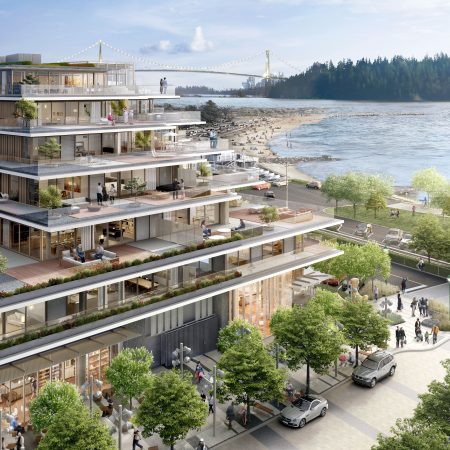Property used to be primarily about sectors – residential, office, retail, leisure. But the lines are blurring, fuelled by demand from a new generation of city dwellers who want to live, work and socialise with like-minded people without having to travel. Whether they’re in London, New York, Amsterdam or Mumbai, members of Generation Y are rejecting the conventional separation of work and home in favour of more holistic live-work-socialise environments.
Capitalising on this new form of mixed-use are some highly innovative developments. Last year, New York-based WeWork, which has co-working locations across America, Europe and Asia, opened a WeLive in New York, offering small, furnished apartments with communal areas including a WeWork space, yoga studio, chef’s kitchen for shared meals and roof decks with hot tubs. The next city to benefit from this new way of living is Seattle, where a 36-storey building will open in 2020, offering co-working space and retail as well as mini-apartments.
New ways of living and working can be found all over the world and are growing in popularity. Smaller living accommodation and bigger communal space is just one model at a co-living development in North West London, opened last year by privately funded The Collective. Rooms are small – 10 square metres with a small shared kitchen. However, on each of the 11 floors is a communal space designed to get residents out of them: bar, restaurant, cinema, spa, gym, roof terrace, large kitchens to host dinner parties, and a library which doubles as workspace.
After developing student accommodation in the UK, Scottish entrepreneur Charlie MacGregor headed off to Amsterdam in 2006 to set up The Student Hotel (TSH), aiming to provide co-living and communal space for students in the city. Now with 10 locations in the Netherlands, Paris, Barcelona and Florence, TSH attracts not only students but young professionals, travellers, creatives or ‘anyone with a student spirit’.
A hybrid of hotel, apartment, club, work and entertainment space, the distinctive bright interiors are designed to encourage residents to interact, with chill-out lounges, TED Talks booths, pool tables, all-day dining and extensive multi-use ground floors. Accommodation packages are offered from two weeks to 12 months, but the local community is also encouraged to use the restaurant and games area in the spirit of integration. More co-working space is being developed in existing premises and upcoming locations – there are plans for 41 TSHs across Europe by 2021.
“There’s enormous potential globally, we are really at the beginning of co-living and co-working,” says MacGregor. “I would love to expand into Asian cities. They are ripe for this model.”
Given the speed of growth in this sector, the potential for investors and developers should be taken seriously. MacGregor says that mixed-use spreads risk and properties such as these could be less vulnerable in a recession than, say, office space.
“The real-estate market is playing catch up,” says urban studies professor Richard Florida. “There is demand for mixed-use development in cities from all age groups, not just the young, but in the US we’re still building too many single-unit homes in the suburbs. People want a more integrated life – they don’t want to live in an isolating way, travelling between work, home and friends.”
Anna Rose, a director of London-based urban planning consultants Space Syntax, recognises the appeal of mixed use. “At the moment it caters mainly to a specific demographic – early 20s to 30s,” she says. “But with larger apartments, it could be a good model for senior living. People don’t necessarily want to do everything in one building. The benefit of a big city is the interaction between a lot of different people, so the location of these buildings is important. We should invest in spaces that can also be used by the neighbourhood.”




